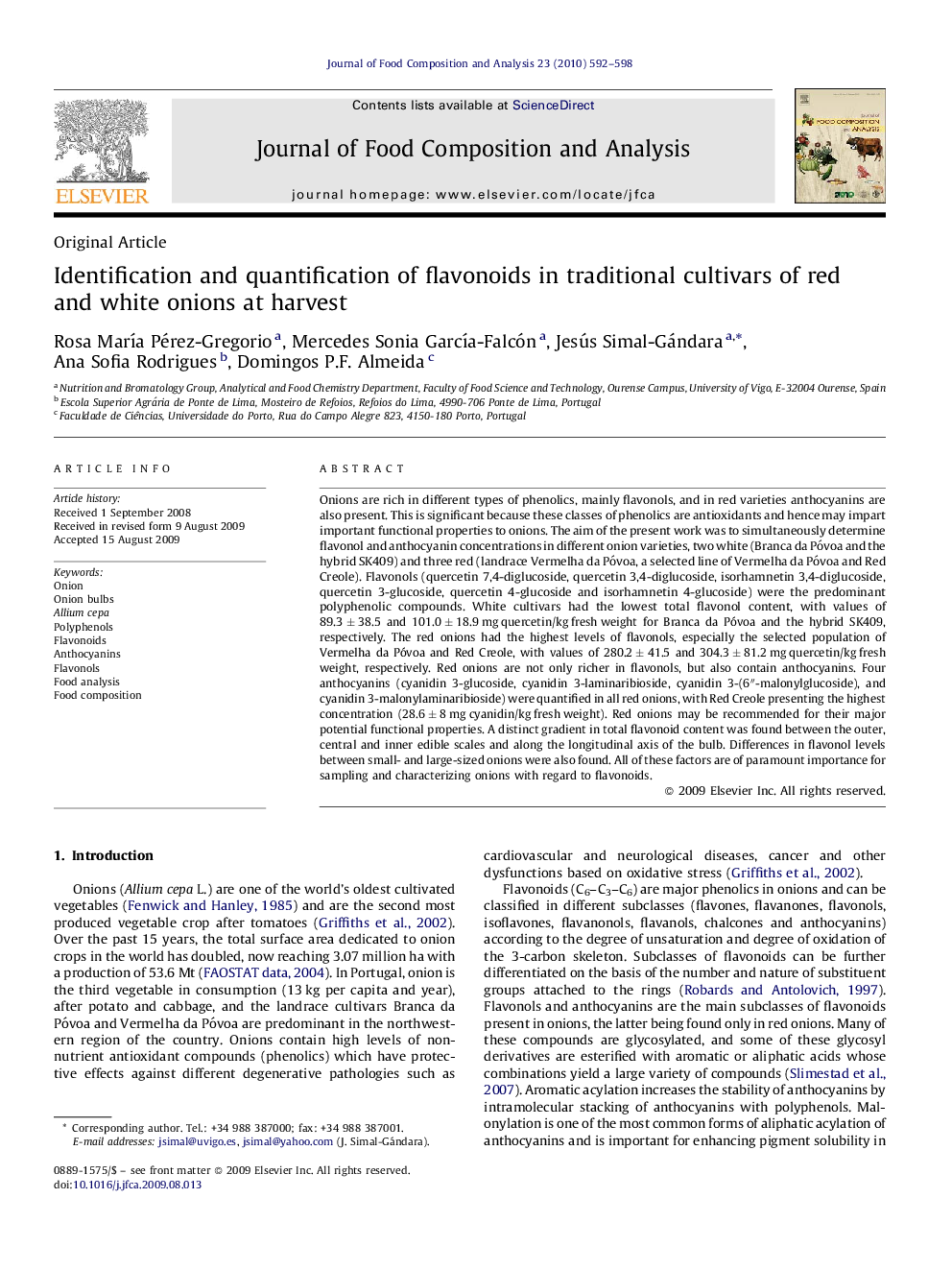| کد مقاله | کد نشریه | سال انتشار | مقاله انگلیسی | نسخه تمام متن |
|---|---|---|---|---|
| 1218486 | 967607 | 2010 | 7 صفحه PDF | دانلود رایگان |

Onions are rich in different types of phenolics, mainly flavonols, and in red varieties anthocyanins are also present. This is significant because these classes of phenolics are antioxidants and hence may impart important functional properties to onions. The aim of the present work was to simultaneously determine flavonol and anthocyanin concentrations in different onion varieties, two white (Branca da Póvoa and the hybrid SK409) and three red (landrace Vermelha da Póvoa, a selected line of Vermelha da Póvoa and Red Creole). Flavonols (quercetin 7,4-diglucoside, quercetin 3,4-diglucoside, isorhamnetin 3,4-diglucoside, quercetin 3-glucoside, quercetin 4-glucoside and isorhamnetin 4-glucoside) were the predominant polyphenolic compounds. White cultivars had the lowest total flavonol content, with values of 89.3 ± 38.5 and 101.0 ± 18.9 mg quercetin/kg fresh weight for Branca da Póvoa and the hybrid SK409, respectively. The red onions had the highest levels of flavonols, especially the selected population of Vermelha da Póvoa and Red Creole, with values of 280.2 ± 41.5 and 304.3 ± 81.2 mg quercetin/kg fresh weight, respectively. Red onions are not only richer in flavonols, but also contain anthocyanins. Four anthocyanins (cyanidin 3-glucoside, cyanidin 3-laminaribioside, cyanidin 3-(6″-malonylglucoside), and cyanidin 3-malonylaminaribioside) were quantified in all red onions, with Red Creole presenting the highest concentration (28.6 ± 8 mg cyanidin/kg fresh weight). Red onions may be recommended for their major potential functional properties. A distinct gradient in total flavonoid content was found between the outer, central and inner edible scales and along the longitudinal axis of the bulb. Differences in flavonol levels between small- and large-sized onions were also found. All of these factors are of paramount importance for sampling and characterizing onions with regard to flavonoids.
Journal: Journal of Food Composition and Analysis - Volume 23, Issue 6, September 2010, Pages 592–598